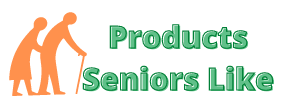In emergency situations, knowing when should you check for a pulse on an elderly victim can be a critical skill. This simple act could mean the difference between life and death. It is not only a crucial component of medical knowledge but also a demonstration of quick thinking and compassion. Whether you are a caregiver or someone interested in elder care, understanding this aspect can be incredibly beneficial.
For many, dealing with emergencies involving elderly individuals can be daunting. The physical changes that come with aging can make pulse-checking a nuanced task. Recognizing the signs and knowing the proper moments to check for a pulse are vital skills. This article delves into these nuances, helping you gain confidence and capability.

General Overview on Pulse Checking
Pulse checking is a process used to determine the heart rate and rhythm. For the elderly, this process can provide critical information on their current health status. Given that the heart’s efficiency diminishes with age, the need to check a pulse accurately becomes even more salient.
The Importance of Pulse Checking in the Elderly
Pulse checking in the elderly isn’t just about assessing heart rate. It’s also about identifying signs of circulatory problems or other underlying health issues. For families and caregivers, this is an essential practice, allowing them to be vigilant and proactive in safeguarding health. Understanding heart health is integral as it connects to a broader understanding of the elderly’s overall health.
Common Scenarios Requiring Pulse Checks
Several scenarios necessitate pulse checking. These include:
- Immediately after a fall or injury, ensuring no acute complications.
- When there’s unexplained or unusual fatigue or weakness.
- During episodes of dizziness or fainting.
- After a significant health episode like a suspected heart attack or stroke.
Identifying these scenarios can prepare you for prompt action, potentially saving a life.
Preparatory Steps for Checking a Pulse
Preparation is key when learning to check for a pulse. Before you begin, ensure the elderly person is in a safe, comfortable position.
Basic Steps in Pulse Checking
Here are the basic steps typically involved:
- Find the Pulse Point: Common points include the wrist (radial artery) or neck (carotid artery).
- Use Your Fingers: Use your index and middle fingers; don’t use your thumb as it has its own pulse.
- Press Lightly: Apply gentle pressure to feel the heartbeat.
- Count the Beats: Count for 60 seconds or for 30 seconds and multiply by two for beats per minute.
These steps can help ensure accuracy and allow for a proper assessment.
Key Considerations Specific to the Elderly
Understanding Age-related Changes
As one grows older, several physiological changes affect the cardiovascular system. The heart muscle thickens, and the arteries may become stiffer, impacting heart functions. Recognizing these age-related changes is crucial when checking the pulse to avoid misinterpretation.
Adaptations for Accuracy
Ensure that you account for these changes by pressing gently and allowing enough time to count accurately. Use adaptive tools if necessary, perhaps even a digital pulse oximeter for clearer readings.
The Role of Caregivers and Families
Empowering Family Members
Families play an integral role in elder care. By learning how to check pulses, they can become empowered, improving the health and safety of their loved ones. This skill can provide peace of mind and foster a sense of security.
Training and Professional Guidance
Consider participating in first aid and CPR training sessions. These educational opportunities not only enhance skills but also foster confidence in emergencies.
Expert Recommendations
Experts in elder care recommend that caregivers routinely practice pulse checking to maintain proficiency. Access to medical consultation is also advised if irregularities are noticed.
When to Seek Medical Attention
If the pulse check reveals abnormalitiessuch as an unusual rhythm or an unusually high or low rateseek medical attention promptly. It’s crucial to address issues as they arise to prevent larger complications.
Conclusion: Stay Prepared and Informed
Ultimately, being prepared to check the pulse of an elderly individual is a vital skill. It can help navigate the complexities of aging and health. By understanding when should you check for a pulse on an elderly victim, you ensure that you are ready to act should the need arise.
Besides enhancing personal skills, consider exploring senior nutrition or dealing with independent elderly parents to have a broader understanding of elderly care.
External Resources
For further information on enhancing elder care at home, consider visiting Caring for Elderly Parents for additional insights.

FAQ
What are common signs indicating a need to check a pulse?
Signs include dizziness, fainting, irregular heartbeats, or after incidents like falls.
What tools can assist in checking an elderly person’s pulse?
While fingers can be used, a digital pulse oximeter can enhance accuracy and ease for consistent monitoring.
How can caregivers improve their pulse-checking skills?
Attending first aid and CPR training workshops can be highly beneficial, providing hands-on experience and professional advice.
This article contains affiliate links. We may earn a commission at no extra cost to you.

